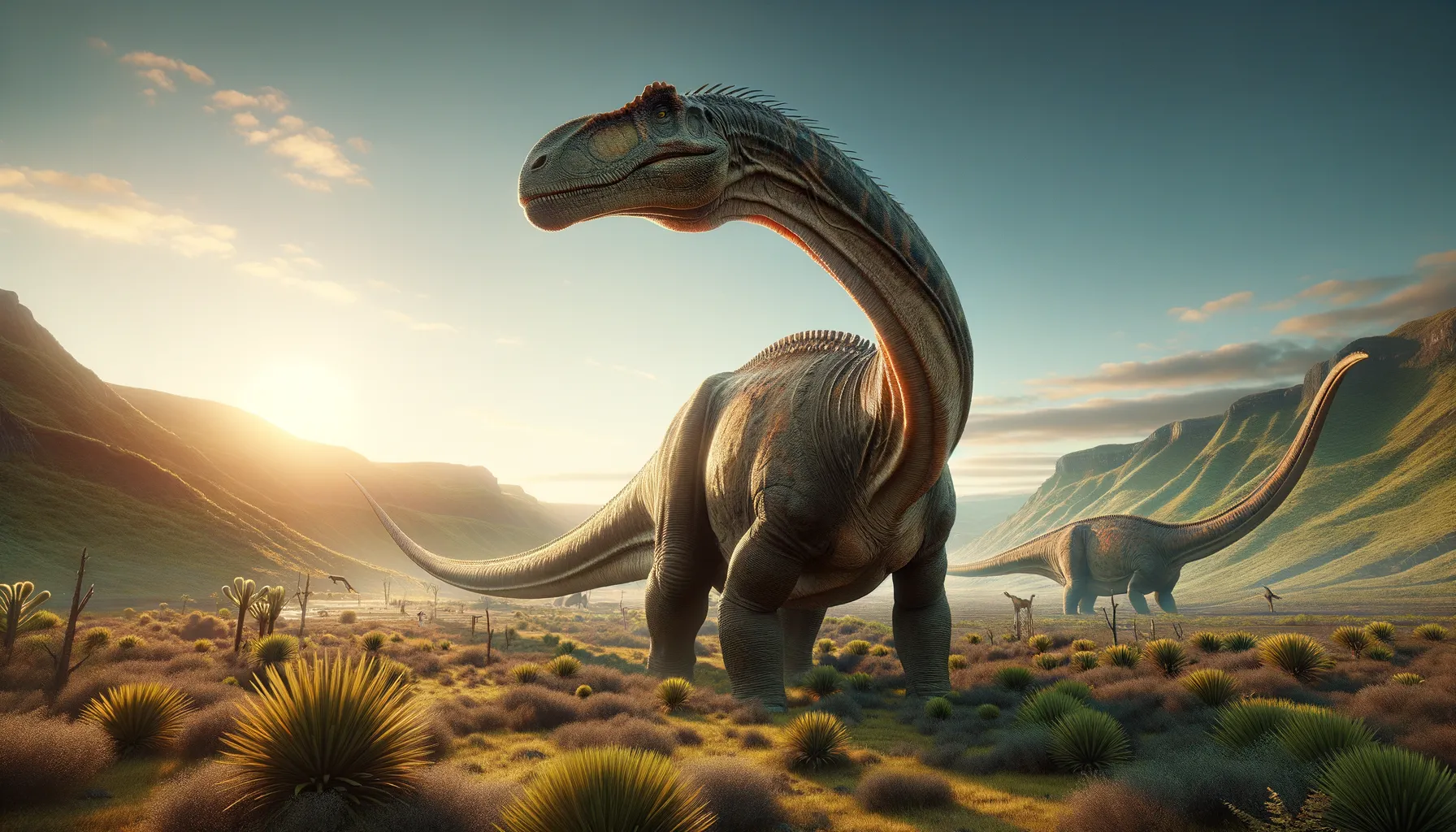
Lusotitan
Gentle giant of the Jurassic era.
Period
Cretaceous
Length
Up to 25 meters in length.
Height
Approximately 9 meters tall.
Weight
Around 20 to 25 tons.
Lusotitan was a massive sauropod dinosaur known for its long neck and tail, characteristic of the family it belonged to. It lived during the late Cretaceous period, around 150 million years ago, and roamed the now geographic location of Portugal. This herbivorous giant used its neck to reach high vegetation and its massive body likely deterred many predators.
Diet
Lusotitan was an herbivore, primarily consuming soft, high-growing vegetation. Its long neck allowed it to reach leaves and branches other herbivores couldn't access, leaving it less competition for food.
Hunting
As a herbivore, it did not hunt. Instead, it relied on grazing to meet its dietary needs. Lusotitan spent much of its time feeding to fuel its massive body.
Environmental challenges
The Cretaceous period was marked by dynamic ecosystems with shifting climates. Lusotitan faced challenges such as competition for food from other large herbivores and predators. Changes in plant life due to climatic shifts would also affect their food supply. The presence of large predators, such as carnivorous dinosaurs, may have posed a threat, particularly to younger individuals.
Speed
Slow-moving, due to its massive size.
Lifespan
Lived for several decades, possibly up to 70 years.
First discovery
Discovered in Portugal by paleontologists in the 1950s.
Fun Facts
- Lusotitan was a giant plant-eating dinosaur that roamed what is now Portugal over 150 million years ago.
- This dinosaur's name means 'Portuguese Titan,' referring to its enormous size and where it was found.
- Lusotitan belonged to a group of dinosaurs called sauropods, known for their long necks and tails.
- It could grow up to an impressive length of about 82 feet, making it one of the larger dinosaurs of its time.
- Despite its enormous size, Lusotitan had a small head and likely spent much of its time munching on plants.
- Lusotitan fossils help scientists understand more about the variety of dinosaurs that lived in Europe during the Late Jurassic period.
- The discovery of Lusotitan highlights Portugal's significance as a hotspot for dinosaur fossils and paleontological research.
Growth and Development
Lusotitan likely grew rapidly in its early years to decrease vulnerability to predators. Like other sauropods, it hatched from eggs and was considerably smaller at birth, growing to full size over several decades. Its life history is characterized by a long juvenile phase followed by a long adulthood.
Habitat
Lusotitan inhabited areas with abundant vegetation, such as forested regions and floodplains. The environment provided a plentiful supply of food necessary for its large size. Its large range likely included wetlands, where vegetation was lush and water sources were available.
Interaction with other species
Lusotitan coexisted with various other dinosaur species, including both herbivorous and carnivorous dinosaurs. While it competed for plant resources with other long-necked dinosaurs, its sheer size likely provided protection against most predators. Predatory interactions were probably rare due to the deterrence its size provided.
Natural lifespan
Lusotitan could live up to 70 years in favorable conditions.
Reproduction
Lusotitan reproduced by laying eggs, possibly in carefully selected nesting sites. Clutches of eggs were likely buried within sediment, where they incubated naturally. Parental care, if any, is uncertain but may have involved protecting the eggs until they hatched.
Social behaviour
Lusotitan may have been somewhat social, living in loose groups for better protection from predators. Herding behavior could help with raising offspring and finding food. Social structures, if present, were likely simple and not highly organized.
Fossil locations
Fossil remains of Lusotitan have primarily been found in Portugal, specifically in the Lourinhã Formation. Portugal's rich fossil beds have been an essential site for uncovering many dinosaur species, including Lusotitan, helping to build our understanding of Cretaceous period ecosystems.
